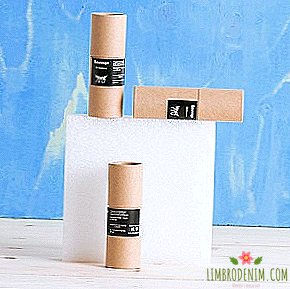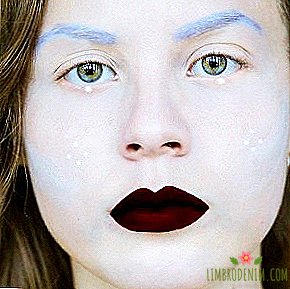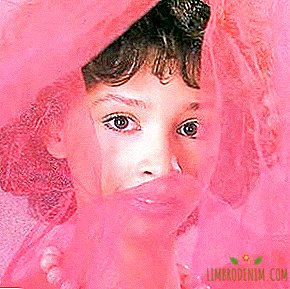"This is freedom": How traveling around Siberia became my profession
My love of travel and wildlife is from childhood. Parents - tourists from the generation of the eighties, for them hiking was a part of youth. If you believe the family photo album, even before I learned to walk, read and speak, I knew what a tent, a sleeping bag and a forest were. When I was seven or eight years old, my father carved out and sewed on my typewriter my first backpack — blue, rag, wet, with a plastic bag and flimsy plastic clasps. Taking it on a trip now is insane, but I keep this thing as a valuable artifact; in memory of the father who is no longer there.

In the summer, my father and my godfather, who was also a tourist, took me to rafting, to caves or to the mountains. Such Spartan holidays: you had to get up at eight in the morning, wash with river water, if you were on duty at the fire - to interfere with oatmeal, burning in an aluminum pot, set up a tent and properly assemble a backpack so that it does not rub shoulders, climb up rocks and moss on passes. For many children, it was all flour, but I loved it terribly, although it was hard. The most vivid impression of childhood was the cedars in the Western Sayan Mountains, their roots protruding from the ground and powerful branches under which it was possible to hide and gnaw nuts. And also the fresh smell of pine needles, the taste of raw, slightly salted grayling, baked in the ashes of cones, resin and blueberries, which I ate in handfuls. And, of course, the mountains. My mother was puzzled that I was not interested in her lipstick, I didn’t like dresses very much, and in general a “boy”. Now I understand that for my little trip, travel was such a strong personal experience that lipstick and dresses did not stand up to competition.
Every year I go to the mountains with close people. It is like air. Our attacks are, of course, not the conquest of Everest, but not the easiest form of travel. Twenty-one days of the road, one hundred and sixty kilometers along ridges, glaciers, larch taiga and desert, six passes of categories A and B, four chipmunks and not a single person - so last year we three went to Kodar and Chara sands in Transbaikalia (by the way, this is one of the most beautiful places in Siberia).
In addition to a lot of cool things like clean air and water, windmills and blueberries, the mountains - it's also oatmeal for breakfast, mosquitoes, cedar elfin branches in the face, hail, spitting on the cheeks, raw trekking, bearish litter and footprints on the trail. Instead, you get frightening silence and beauty that you cannot fit into a word, picture or sound. To make a photo diary, I took an Instax camera to Kodar. For the first four days of the journey, I frantically filmed - I was nervous that what I see and feel doesn’t fit on the 50 by 80 millimeter card. And then, crossing the river ford, I accidentally drowned a backpack and a camera. It was a release! Back in 1977, Susan Sontag wrote intuitively about essay “Look at the photo”: “Photographing is not so much evidence of experienced experience, as it clearly rejects the possibility of acquiring this experience, replacing it with image, souvenir. " A person can trust his gaze and memory more. Maybe, but in the era of total photography and visuality is not solved.
Wildlife is also an opportunity to see and feel beyond social and gender roles. This is freedom. Mountains and forests do not ask how much you weigh, do not estimate the size of your chest or hips. They do not care who you are: daughter, sister, wife, journalist, curator, tourist, after all. They will never ask what your plans for life are, and are you going to give birth? Nature accepts the body, choice and inner world of a person with all his injuries, fears, joy and hope.

Mountains and forests are not interested in how much you weigh, they do not appreciate the size of your chest or hips, do not ask, what are your plans for life, and "are you going to give birth?"
In high school, when it came to future work, my mother hinted that the “normal” profession was an economist or a banker. Dad said: "You won't perish with English." But it seems to me that the parents themselves did not take these tips seriously, knowing my curiosity and the urge to travel and tell stories. They gave me the freedom to choose, and traveling became part of my profession.
When I graduated from the faculty of journalism of the Siberian Federal University in Krasnoyarsk, I already worked as a journalist in several publications: I wrote about movies, photos, events in the city. But I always wanted more to interview, to work "in the field" to tell people stories about others. I knew that in Krasnoyarsk or another large Siberian city, the media would not offer me steep (in my understanding) business trips. I did not plan to go to Moscow or St. Petersburg, so there was an option to come up with something of my own. And since I was interested in Siberia, local culture, a little - anthropology and history, I suggested that the editor of Siburbia magazine, where I was then a journalist and regional editor, talk about various Siberian places: cities, villages, reserves. Thus, the project “Siberia and the Point” appeared, which in three years turned from a small project in the “Geography” heading into an independent media, which is made by a team of friends and colleagues.
I always wanted to see Siberia different, without stereotypes about taiga, bears, gulags and endless winter. Siberia is about the taiga and not about the taiga at the same time. This is a huge quilt, and yes - terra incognita: the more kilometers you wind up, the more clearly you understand that you do not know this huge space, and the kilometers of the unknown will never run out. To tell truly deep stories about people, places and culture of the regions, it is not enough to read local history books, google and look at the map while drinking coffee. You need to go "in the field", to meet with the locals and landscapes. And this is where not only incredible journeys begin, but also incredible work - from searching for a topic to publishing a beautiful and coherent story on the website, exhibitions in museums and public lecture halls.
If we talk about the working kitchen, the first challenge is to find money for travel. "Siberia and the Point" is a non-commercial project, it lives at the expense of its own investments, grants from the Mikhail Prokhorov Foundation and a small financial help from sponsors and readers. But even when we have money for transportation and a tent, the difficulties do not end. Usually I choose remote places, extreme points of Siberia, where there is often no Internet, or it is very weak, or potential heroes do not use it, where there is a bad cellular connection and where to go, just by buying a plane ticket or train. Therefore, several months are spent only on finding the right information, phones, heroes, places, laying a route and organizing an expedition for two or three people: me, a photographer, an operator.

A separate story - field work. This is a lot of communication with the locals, new landscapes, new cuisine, new transport. Sometimes I think that “Siberia and the point” is how to find the secret entrance to Kosoy lane. Once - and you wander in the polar night along Dixon, you communicate with the northerners about how a fox drove a dog in the yard, and eat to sugudai for dinner. Two - and you are in the Chuya steppe in Altai, talking with the Kazakhs about yaks and camels, and at a national wedding you, as a dear guest, are served with the head of a ram or treated with blood sausage. Field work is both cool and tense, because you need to keep abreast: look for outlets and throw gigabytes of footage and recorded material on the hard disk in time, search for refueling and move from the steppe to the village in an organized way mountains, try on "other worlds", digest new information. Eat, wash and sleep, after all. For me, this is also internal work: I try, as far as possible, to distance myself and feel the rhythm, the “nerve” of a place, to see what little things everyday life of people consists of, and to understand how they think, to catch smells and sounds.
In the Russian media now there are very few stories about the regions. For me, this is a sign of a crisis in journalism: there are not enough publications that are ready to write about Vladivostok or Tomsk, not only short news, not enough good authors, money for travel and high-quality photo reports. And private stories are now very necessary and important, because we absolutely do not know, do not understand our own country, its people, culture, and even geography.
Siberia, for example, is always understood as something single, but this is fundamentally wrong. Therefore, I divided the "Siberia and the point" into conventional poles: north, south, west and east. So you can somehow master the territory, feel the contrast between the regions. If you go to the east, to the Trans-Baikal Territory, you will see the sea of the Daurian steppe, antelopes - dzerens, which are almost nowhere in Russia, Buddhist datsans, listen to tales about the cat manul and sit down on Buryat buuza from minced mutton (if, of course, eat meat). To the question "Do you think this place is Siberia?" the locals will calmly answer: "No, we are in the Trans-Baikal Territory", and the conversation about brown bears will be supported without enthusiasm - on the border with Mongolia, bears are not as relevant as in Krasnoyarsk.
If you decide to go to the north of the Krasnoyarsk Territory, to Dikson, Dudinka or Norilsk, they will tell a dozen stories about polar bears, the tundra blooming in June, long polar nights and days, ski trips in May and the life of Soviet polar explorers in wintering grounds. And after traveling to the south of the Altai Republic, it will become clear that living all year round in a yurt, herding yaks, inviting six hundred people to a wedding, making syrmaks from felt - all this can be just a part of life. I like that in the project I can show this contrast.

Private stories are now very necessary and important, because we absolutely do not know, do not understand our own country, its people, culture and even geography.
During the year we talk about one "pole" of Siberia. Last year it was the north: the project on the Arctic village of Dikson on the shores of the Kara Sea, the northernmost in Russia, and the special project on Siberian cuisine became the main material. The work contains stories about nomads of southern Altai, repression of Buddhists and wooden architecture of Tomsk. Haitians have the proverb “Behind the mountains are mountains” (“Dèyè mòn gen mòn”), which means that hundreds of new ones arise after one problem solved. "Siberia and the point" is "beyond the mountains of the mountain." It is not simple. But who, besides myself, would give me such a job, meeting people and traveling in Siberia?
My work has another side. I often have to deal with stereotypes about women and journalism. Some researchers, whom you want to interview or consult before the expedition, are concerned that you are a journalist. There is no trust in society to us, and we have to make efforts to make the conversation important for you. Some heroes need to be shown that you are not just a tourist with a voice recorder and that asking questions is your job.
Women have long conquered Everest, they do not need to change into men's clothes, like Jeanne Barre, to round the world on a ship, hitchhike, see the world, sit on a bicycle. But in the twenty-first century, travel is not always perceived as a normal female practice. The stereotype that a woman is first and foremost about the house, the children and the household is still strong.

The last four years that I have been driving in Siberia, my mother every August asks: "Is that all, was it the last summer?" She wants to see me "home", and herself - surrounded by her grandchildren in the country. And every year I explain why traveling is important for me and that children and summer cottage are cool, but a little later, in due time. Some colleagues or friends who have kids after the next summer are more curious when my husband and I are planning children than asking about the expedition from which you have just returned. I know that these questions are not being asked outright. But one way or another, they are broadcasting: traveling to remote places at twenty-eight years old when you have a family and a home is an eccentricity. And I feel comfortable both on the road and at home, both in trekking boots and in a skirt. A woman can accommodate a lot of different, paradoxical, does not fit into the norm. I am glad that many of my close people understand and accept this, and one of them is my husband.
I did not immediately think about it, but traveling helped me to understand other women more deeply. One of the first places I went to when I started “Siberia and the point” was the tiny village of Malaya Syya in Khakassia. According to local residents, a little more than ten people live permanently in the village, but this is a popular place among speleologists and tourists. In the area of more than twenty studied caves of different levels of complexity: with mazes that can be run in two hours, and with dungeons that do not pass in a day. It is beautiful there: the mountains, the forest, the river Bely Iyus.
On this trip, I met the zoologist Helen, with whom my friends and I rented a house for the night. Once I went to her for firewood, but in the end I stayed for tea. It turned out that Elena contains a small museum of archaeological finds, leads underground caves of beginning speleologists, and for Tomsk State University is monitoring bats in the Archaeological Cave. For Elena, this underground world and her cozy country house with a stove, a cat, a husband and bookshelves are equally interesting and important parts of life.
In the Arctic, the usual division of professions into "male" and "female" often becomes conditional due to the severity of the Far North. For example, on Dixon, we met Zinaida and Mikhail Degtyarev, an elderly family of fishermen who "have been climbing the tundra together for fifty-three years." In Soviet times, the Degtyaryovs worked at a fish factory and lived in wintering sixty-five kilometers from Dixon (many lived in the north until the early nineties). But what is wintering in the Arctic? This is a wooden house, this is a bathhouse, this is a "bear kingdom", this is a blown tundra, hunting foxes on a polar night or an icy sea, where you need to go beyond the Arctic omul, chir, muksun, seal, sea hare. Now the Degtyaryovs live in the village and, as private entrepreneurs, continue to fish legally, the two of them get tons of fish every year. In the North, many women are fishing, hunting, riding all-terrain vehicles, skiing in winter, coping with extreme weather conditions.

Why not live in a yurt with your beloved husband and children surrounded by fantastically beautiful mountains, with homemade cheese, milk, meat, in the fresh air? Everyone has freedom of choice.
In the south of the Altai Republic, we collected material on the transformation of nomadic cattle breeding, the nomadic way of life of the Kazakhs. We lived next to families that all year or part of it live in yurts in river valleys and graze cows, sheep, goats, horses, yaks or, for example, work on kumis farms. Many Kazakhs in Altai are Muslims; therefore, during a life in a parking lot, the distribution of responsibilities in the family is most often “traditional”: for a man - cattle, transport, financial affairs, for a woman - kitchen, children, household (although in villages and towns work).
In the last expedition, the photographer and I lived in a parking lot next to three young families of Kazakhs. Kazakh women, my peers, the first two days, when we stayed in a yurt without men, asked with bewilderment: "Why do you go without a husband? Why does he let you go so far? Why do you live in one tent with a foreign man? Why you do not have children ? " I, in turn, were interested in their stories: why, right after graduation from the institute or college, they did not try to work in the city, but chose a family and life in the parking lot and in the village? How can they cope with three or four restless children at twenty-seven? How do they have the strength to whip koumiss and manage with a bunch of small things in the yurt?
We talked, shared stories, watched each other, and misunderstanding disappeared. Indeed, why not buy a ticket for a train, bus or ship from time to time, not to ride a bike or collect a backpack to see the world? And yes, why not live in a yurt with your beloved husband and children, surrounded by fantastically beautiful mountains, with homemade cheese, milk, meat, outdoors? Everyone has the freedom to choose.
In November, I spoke with anthropologist Svetlana Adoneva, who recently published the book “Tradition, Transgression, Compromise: The Worlds of a Russian Country Woman” in Russian, written in collaboration with Laura Olson. She said the words that are now always with me: "Inside the conversation you always open up - this is the horizontal position that allows you to open worlds. We started talking - we created a common world, and we are responsible for it. We bear each other's tracks." Not souvenirs, postcards, no interviews, and not articles, but these footprints are one of the most valuable things that you bring home, carry in yourself. For their sake, I am on my way.
Photo: Sergey Popov, Anton Petrov, Fujifilm Instax





